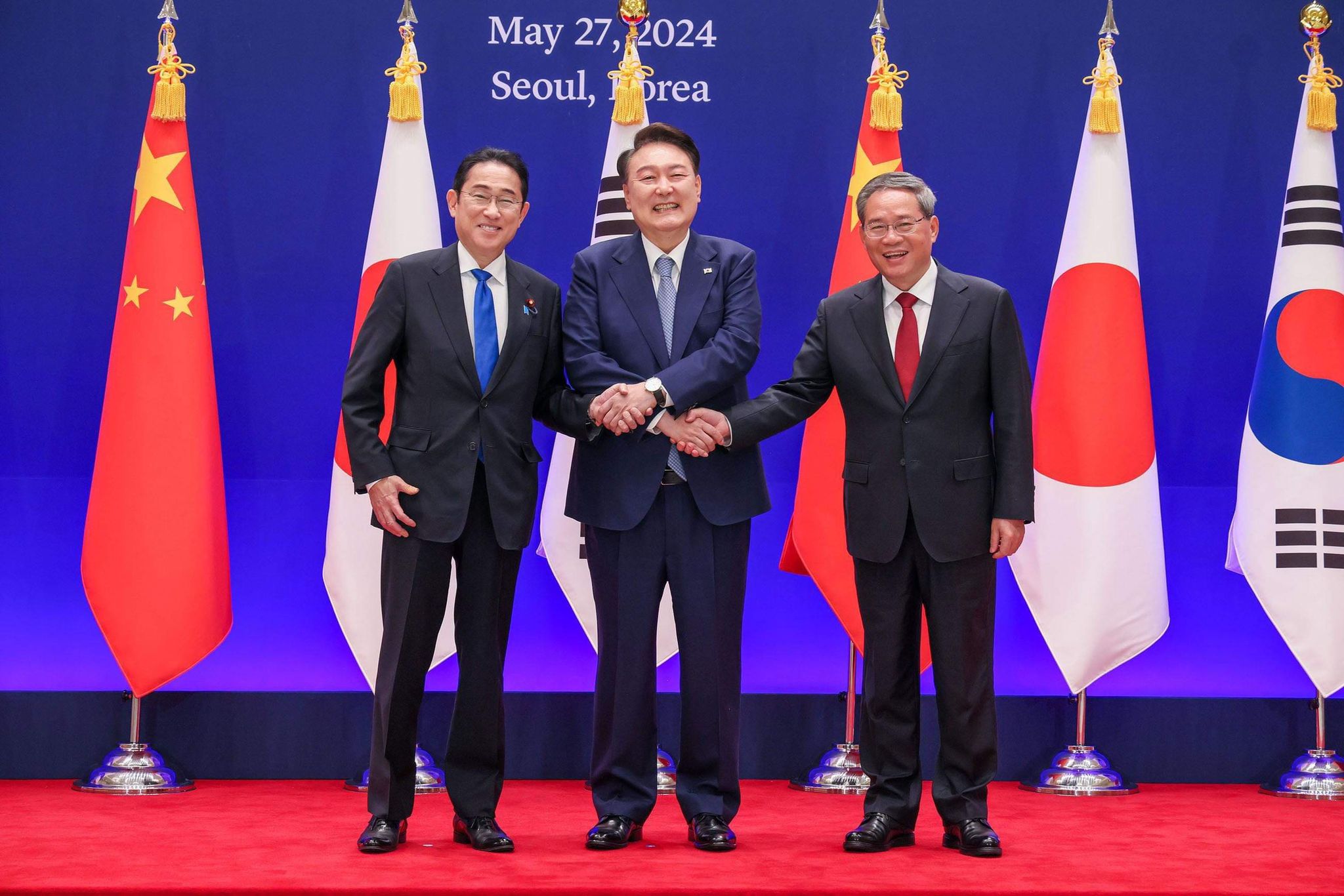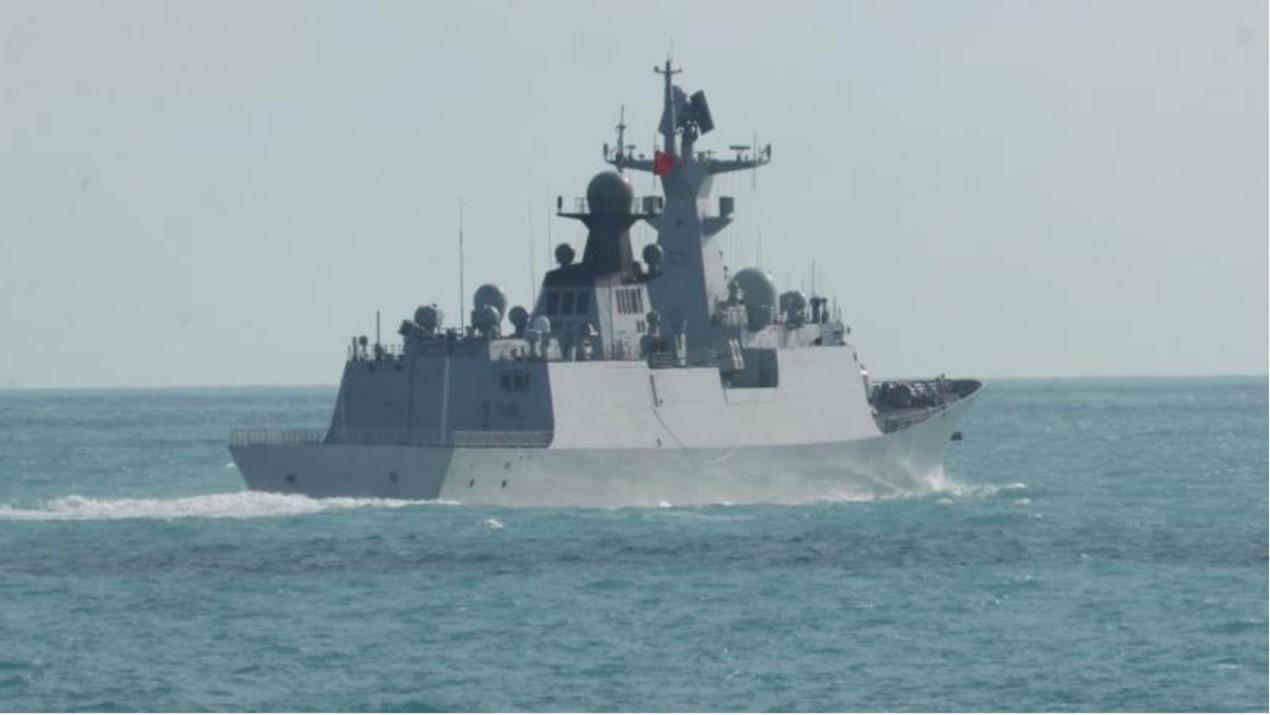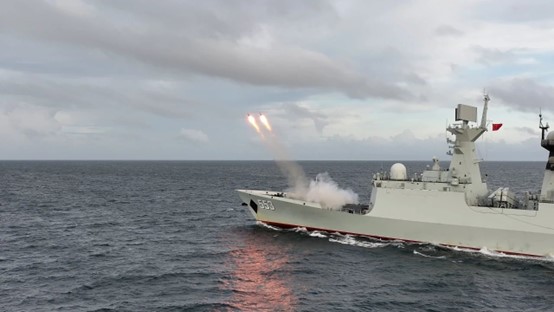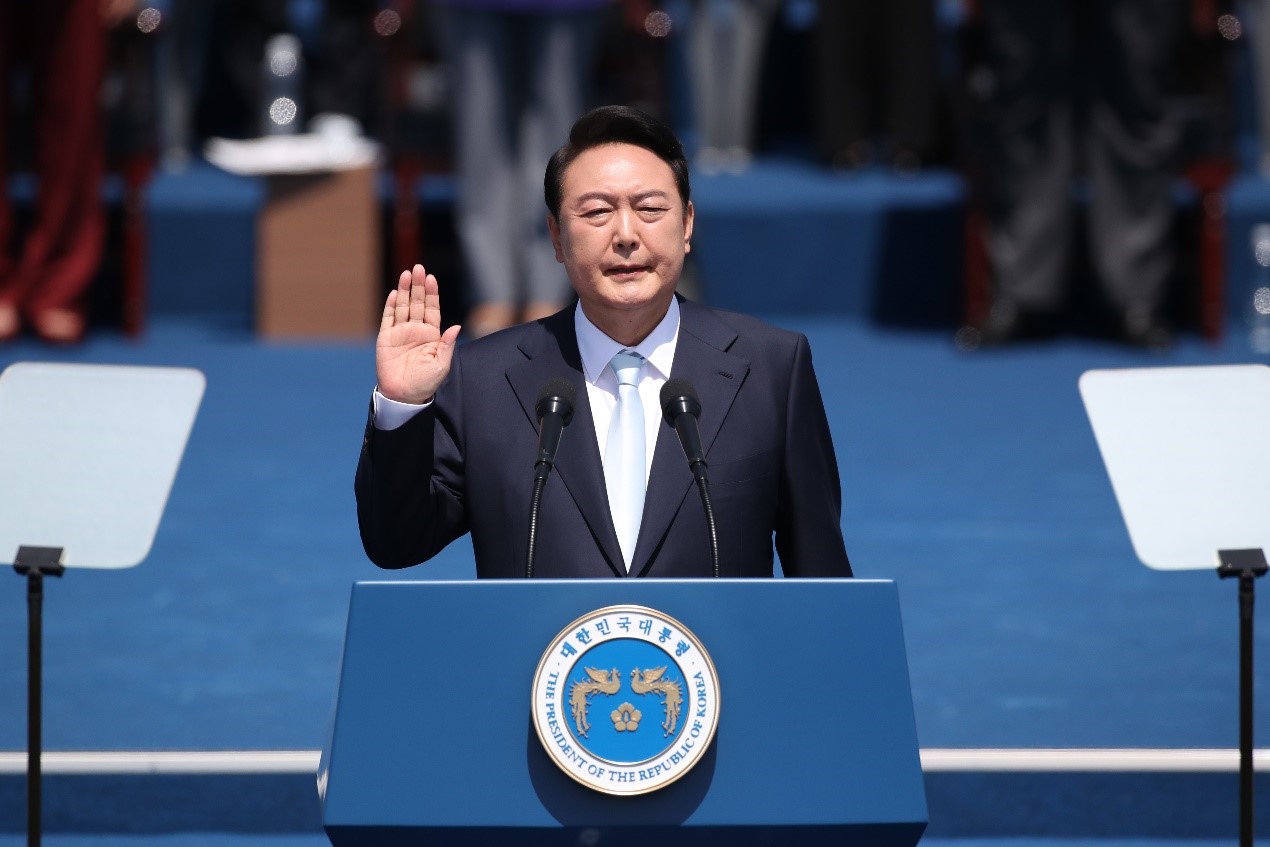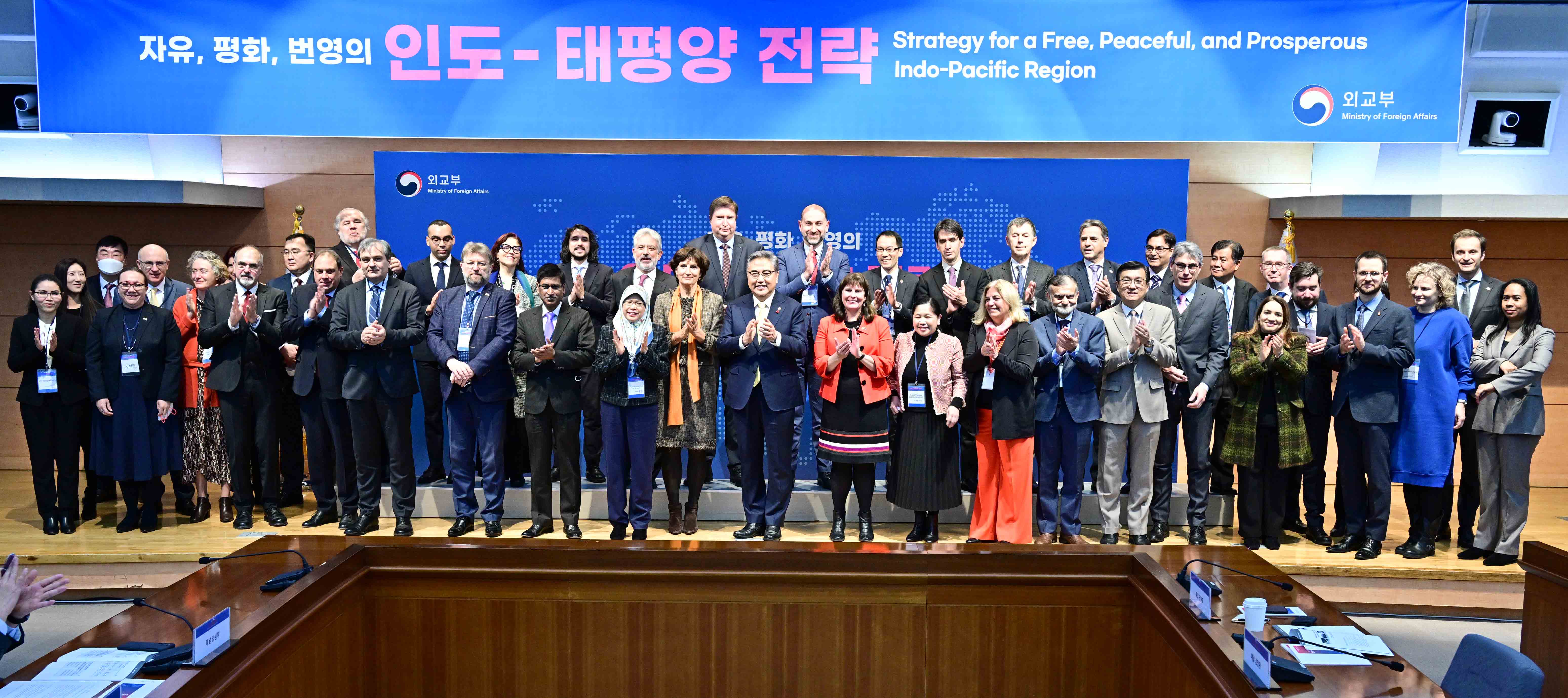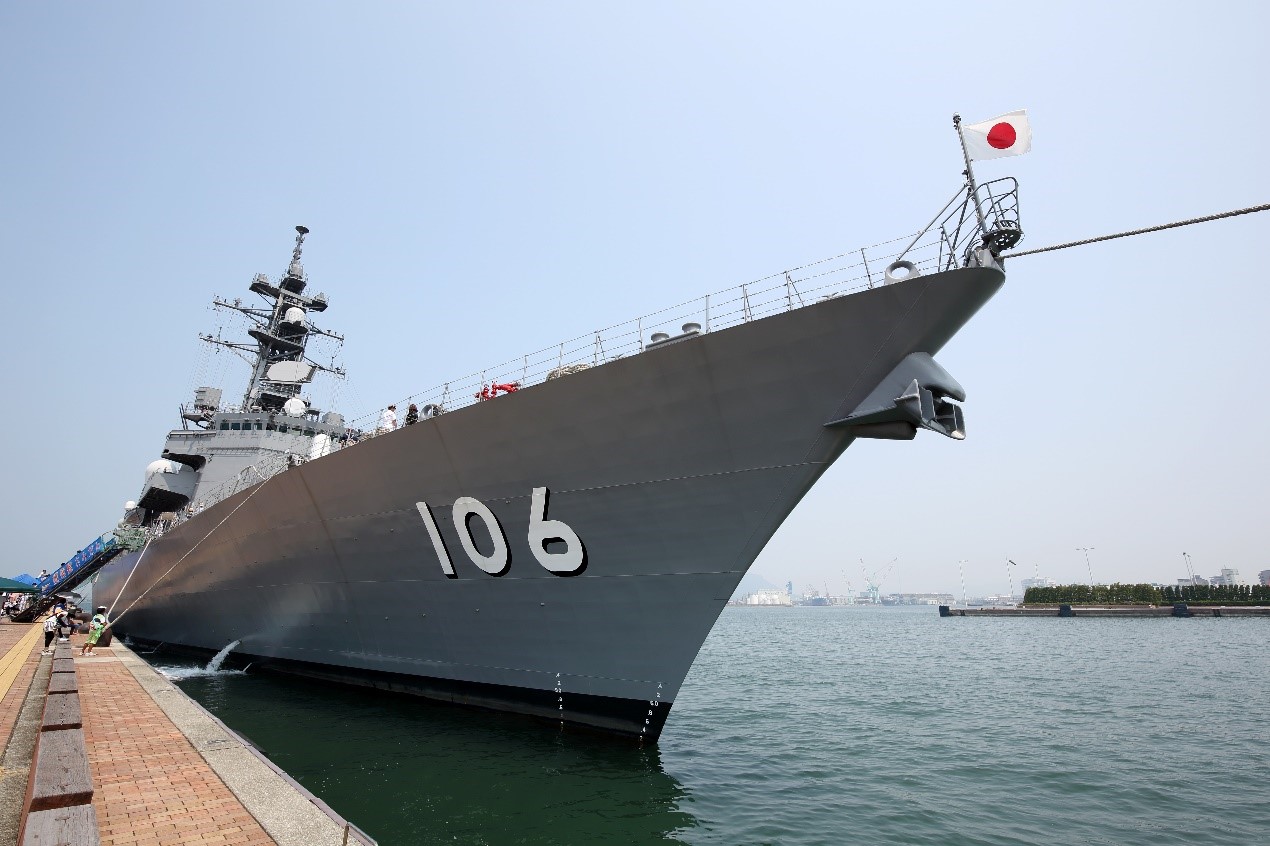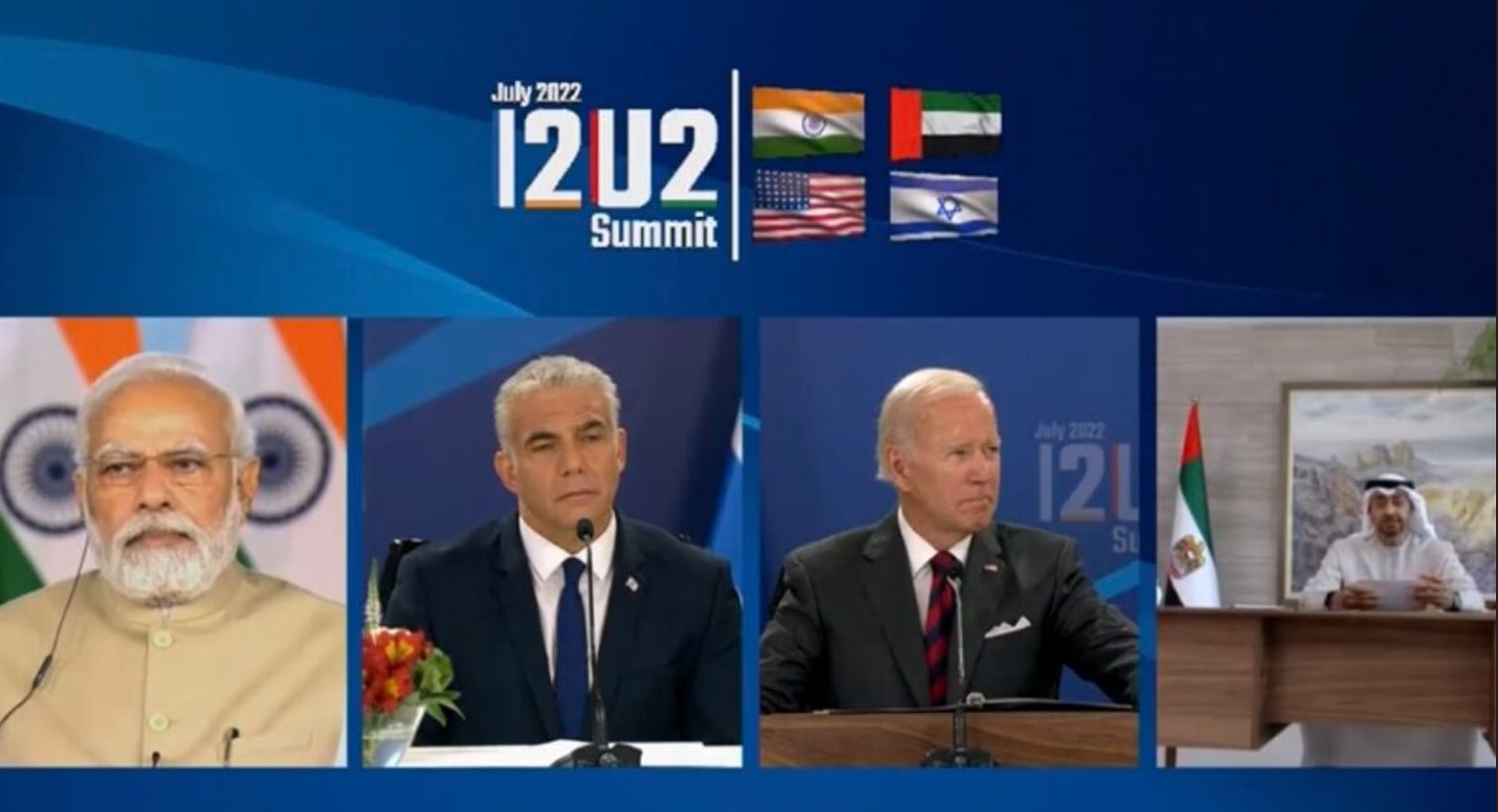Superficially, Beijing’s engagement in trilateral talks with Seoul and Tokyo, as opposed to Moscow and Pyongyang, may suggest partnership. However, the direction of China’s relations should be very clear. It increasingly treats North Korea and Russia as partners and South Korea and Japan as adversaries, with even greater regional tensions likely ahead. Picture source: 日本首相官邸, May 27, 2024, Facebook, https://www.facebook.com/photo?fbid=995824175232944&set=a.485969416218425.
Prospects & Perspectives No. 39
Unpacking the Recent High-Level Meetings on the Korean Peninsula
By Joel Atkinson
Northeast Asia is an uneasy combination of rising tensions and growing relaxations right now. This contradiction was exemplified by two unusual high-level meetings on the Korean Peninsula. Chinese Premier Li Qiang and Japanese Prime Minister Fumio Kishida joined South Korean President Yoo Suk Yeol in Seoul on May 26-27, the first such trilateral meeting in more than four years. Following this, on June 19, Russian President Vladimir Putin travelled to Pyongyang to meet with North Korean leader Kim Jong Un, his first visit in 24 years.
The trilateral format initiated in 2008 has been highly valued by Japan and South Korea, both of which actively sought another round of talks. Both Yoon and Kishida aimed to engage China to demonstrate to their publics and corporate sectors that closer relations with the U.S. do not preclude diplomatic and economic cooperation with China. Specifically, they hoped to persuade Beijing to moderate its foreign policy and cooperate more in restraining North Korea. Seoul, more so than Tokyo, hoped that China’s economic difficulties might prompt Beijing to stabilize the region and prevent the development of a stronger U.S.-Japan-South Korea alignment.
Beijing’s card
Beijing had delayed agreeing to the meeting, seemingly waiting for a favorable geopolitical moment and a more concessionary attitude from Seoul and Tokyo. With Washington now entangled in a “thaw,” Beijing saw little danger from Seoul and Tokyo playing the U.S. card. Domestically, the poor performance of Yoon’s party in South Korea’s legislative elections and Kishida’s rock-bottom approval ratings put both leaders on the back foot. The trilateral meeting thus offered Beijing an opportunity to show that regional cooperation trends and shifting power balances are still in its favor. The meeting also aimed to cast doubt on the full support of U.S. semiconductor controls by its East Asian allies, and therefore those controls and the wider effort to decouple from China will fail.
Ultimately, all sides were able to demonstrate a rising cooperative trend in line with their respective narratives, even if the actual level of cooperation was low in both an absolute and relative sense. There was no commitment to do anything difficult, and the joint statement avoided offending third parties, steering clear of areas where cooperation might come at the expense of the U.S., Taiwan, North Korea, and Russia. However, there was controversy, with Beijing and Seoul disagreeing over Yoon’s remarks on Taiwan during his meeting with Li Qiang. Additionally, when North Korea announced its satellite launch plans, China did not join South Korea and Japan in issuing a warning. Unlike previously, Beijing also refrained from explicitly endorsing the goal of “denuclearizing the Korean Peninsula” (a goal North Korea has also endorsed, it should be noted).
Contradictions abound
While the cooperative gloss raised hopes, the tension side of the contradiction continues to prevail. While often labelled “U.S.-China competition” or the like, this tension exists because China on one side, and South Korea and Japan on the other, want important things that are incompatible. Each side hopes that this current “thaw” means the tensions can be reduced through the other side making concessions. With the only concession Beijing made being to agree to the summit, it is hard to see how Beijing’s softening of its stance is anything but tactical.
The second meeting, between Kim and Putin in Pyongyang, certainly suggests that increasing tension is — as Beijing likes to say — the trend of the times.
The statements and agreements emerging from the summit suggest that North Korea will continue and even escalate its support for Russia’s Ukraine invasion, support which is having a material impact on the battlefield. In return, Russia appears set to undermine international sanctions on North Korea’s nuclear and missile programs and may even provide high-tech inputs. There was also the unveiling of a security pact. While not a binding commitment to fight side by side, it sent a loud signal that Russia was significantly increasing its military-related support for North Korea in a way that would boost its confidence in engaging in brinkmanship.
There was widespread speculation that the Kim and Putin meeting and its fruits constituted increasing tension between Russia and North Korea with China as well. This fed into the narrative that China is now ready to compromise with the South Korean (and Japanese) side, so perhaps some preemptive concessions to Beijing are in order to further encourage movement in that direction.
Misreading China’s foreign policy
This is probably a fundamental misconstrual of China’s foreign policy and its relationships with not only Russia and North Korea, but also with the U.S., South Korea and Japan. However, whether by design or fortuitous accident, the structure of the twin summits aligns with China’s preferred direction. As Tong Zhao, Senior Fellow at Carnegie China Nuclear Policy Program, put it: “deepening Russian–North Korean military cooperation, while it causes certain troubles for China, helps Beijing cultivate an image as a more responsible power. It strengthens Beijing’s value to Western countries as a partner to engage with rather than as an adversary to isolate. Western officials are increasingly keen to explore how they can collaborate with China to curtail Russian–North Korean military cooperation or mitigate its consequences.”
The fundamental question then: is China a partner to engage with or an adversary to isolate? Superficially, its engagement in trilateral talks with Seoul and Tokyo, as opposed to Moscow and Pyongyang, may suggest partnership. However, the direction of China’s relations should be very clear. It increasingly treats North Korea and Russia as partners and South Korea and Japan as adversaries, with even greater regional tensions likely ahead.
(Joel Atkinson is Professor, Hankuk University of Foreign Studies.)


